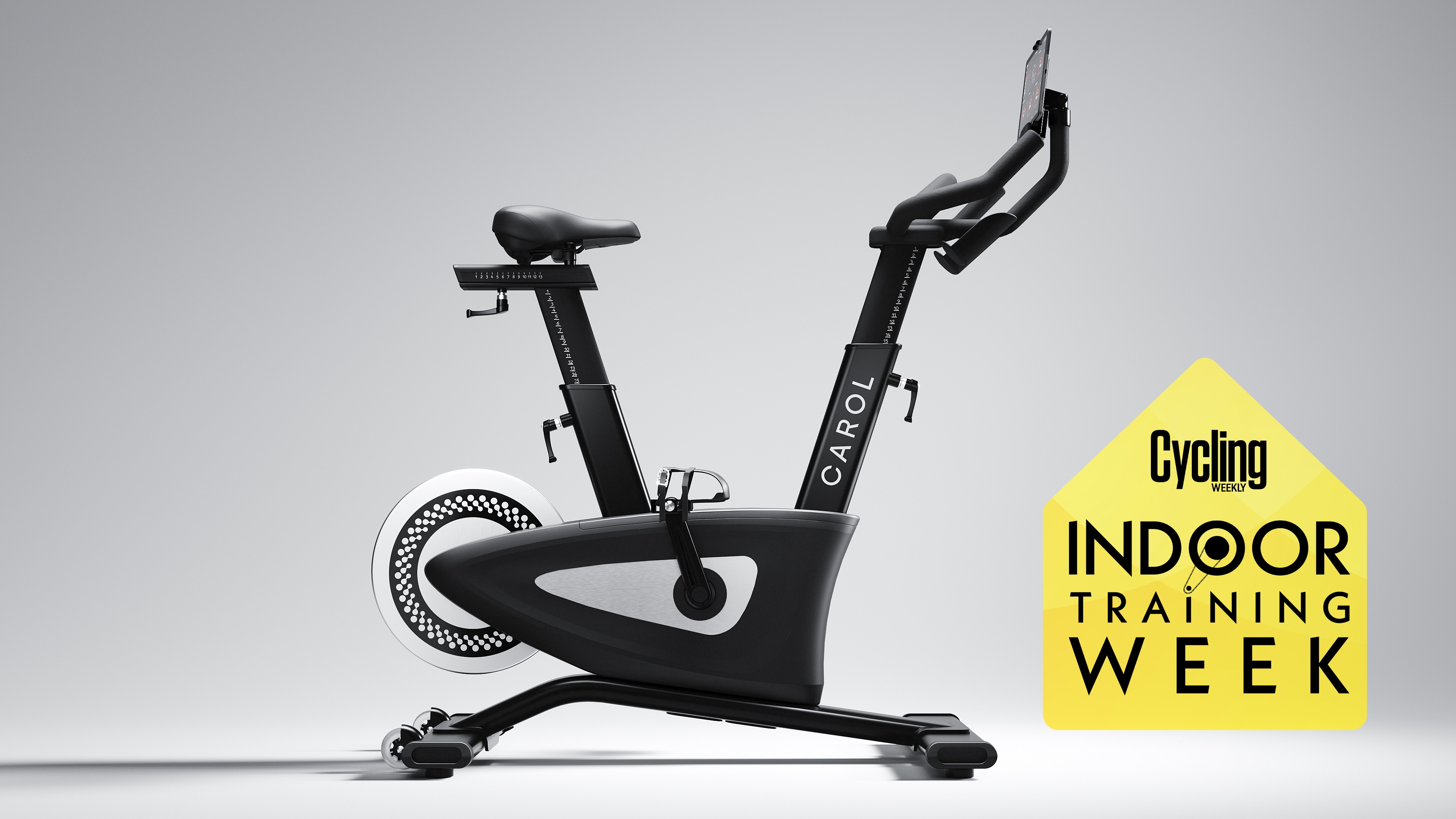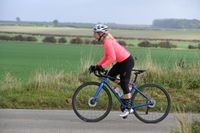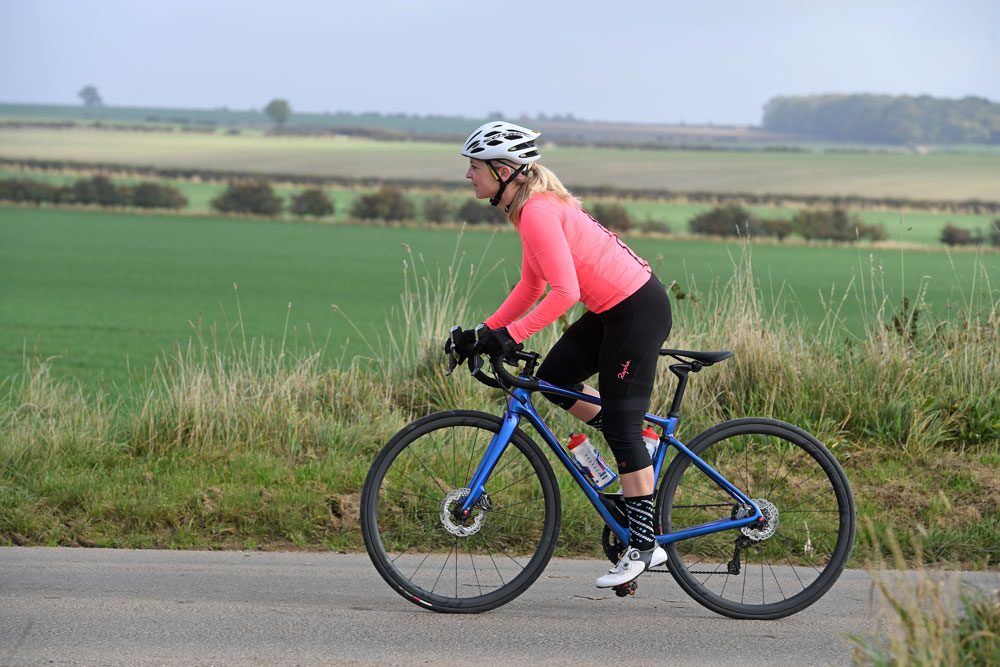Makers of this AI powered bike claim you can get fit in under nine minutes a day — we put it to the test
Dedicated cyclists often consider an hour the threshold for a successful indoor training session — but could the reality be much, much quicker?


The Carol bike looks very much like any other exercise bike you might find in a gym; it offers a lot of adjustability of position, a tablet for on-screen instructions and a rear wheel where the resistance is applied. While the bike itself is carefully engineered, the biggest difference is in the types of session the equiptment is designed to offer through its AI workout programmer.
The Carol bike’s purpose is to reduce the amount of exercise time required for health benefits, claiming that you can get "the health benefits of a 45-minute run in just 8 minutes and 40 seconds through a workout called reduced exertion high-intensity interval training (REHIT)". This almost too-good-to-be-true claim is backed by peer-reviewed scientific research.
REHIT works by pushing the body into a "fight or flight" mode during maximum-intensity exercise, drastically increasing energy demands, depleting glycogen reserves and triggering physiological adaptations that enhance fitness and strength.
Carol’s AI algorithm claims to tailor an optimal workout calculated on your rate of fatigue during the sprints, maximum pedal speed, age, gender, weight, height, and past resistance, so each time you train, the session is adapted to ensure progression. On-screen instructions guide you through the session while automatically applying the optimal resistance. While incredibly hard, the maximal efforts are only a few seconds long, so you can do them with relative ease at any point. Within 12 minutes, you can do a session that includes a short warm-up and cool-down and be on your way.
The bike costs £2595, and membership to the indoor training app costs £19.99 a month.
The science behind the claims
In a ‘fight or flight’ situation, your muscles are forced to mobilize about 25-30% of muscular glycogen—your emergency energy reserve—releasing key signalling molecules (AMPK and PGC-1a), telling your body it must get fitter and stronger. Do this often enough and you will begin to develop more mitochondria, your blood plasma volume increases, and your heart gets stronger. The total of these changes is an increased aerobic and anaerobic capacity. These changes are also accomplished during longer, steady-state endurance sessions or by more traditional styles of high-intensity training but scientists believe that the very short maximal efforts that the Carol bike sessions are based on provide a shortcut to the same fitness benefits.
Everywhere you look on the Carol website there are links to peer-reviewed studies that demonstrate that these claims are grounded in genuine research. For example, a study by Western Colorado University compared doing short Reduced Exertion HIIT (REHIT) workouts on a Carol Bike each week with 5x 30-minutes of moderate-intensity continuous training. In 8 weeks of training the Carol Bike group increased their VO2max by 12.3%, the other group by only 6.9%.
The latest race content, interviews, features, reviews and expert buying guides, direct to your inbox!
For someone who takes their cycling seriously 5 x 30-minute sessions isn’t very much riding at all; it meets the 150 minutes of exercise per week recommended by sources such as the NHS, an amount of exercise met by around 63% of the population according to Sport England. But there are still many people not meeting that target and many more who probably find the time commitment challenging.
Co-founder Ulrich Dempfle was inspired by seeing the late Dr. Michael Mosley, author of Fast Exercise on television talking about HIT training and demonstrating a session on an exercise bike even while wearing a suit, "I thought seeing him that there here was an opportunity for more people to get fit and healthy if we could take away the time constraints and difficulties."
With a background in mechanical engineering, his approach to this problem was to create a bike that could sit in an office or someone’s home that offered very high resistance for short maximum efforts alongside AI learning to ensure constantly tailored progression with very little thought required by the user.
The key CAROL session includes 2 x 20 second maximum effort sprints with a low intensity warm-up and cool down, the whole session lasts less than nine minutes. This style of REHIT session has been shown in research to have many health benefits, including risk factors associated with Type 2 diabetes. There are clearly benefits to those who don’t reach their exercise needs or struggle to do enough but does it offer a benefit to someone already regularly cycling?
Pros of short workouts on the Carol bike
- Knowing even short sessions make a difference means you are more likely to jump on for a quick session without even bothering with Lycra. It’s always there whenever you want to train or have a few minutes to spare, these occasional minutes all add up.
- On-screen cues guide you through the workouts which helps you to stay engaged and motivated. You also don’t need to think too much about the session, another useful thing if you are short on time.
- Automatic AI adjustment of your training load means you are always progressing without and the interactive features and structured workouts are motivating and easy to use.
- It appeals to the non-cyclists in the household too and is easily adjustable for different users. If you do invest at least everyone can benefit from it.
Cons of short workouts on the Carol bike
- This is an expensive investment, which may not be affordable for everyone.
- It is a fixed piece of equipment and not as easy to move around as simple static turbo trainer so it has limited versatility.
- The Carol bike requires a dedicated, permanent space in the home. This might be challenging if you only have a small living space or don’t want exercise equipment permanently on display.
We tried it!

Experienced rider Hannah Reynolds have the Carol AI bike a go
In the true spirit of the Carol bike I jumped on for my first session wearing jeans and a pair of slippers.
Out of the box there was very little set-up needed and the on-screen instructions, particularly the ones relating to breath control were very calming and easy to follow.
The sprints were hard enough to feel your muscles work but so short they didn’t raise a sweat or need much recovery time so could be done at virtually any point in the day. For me this was the biggest selling point of the bike, if I had a few minutes spare between video calls, whilst waiting for something to cook or even just in need of a screen break the bike was ready to just jump on and go without a lot of planning or thought. Even with a turbo trainer set-up – which in many ways offers the same convenience – I’d have not done this.
I think the on-screen cues and short sessions makes it easy to do bite-size exercise instead of thinking ‘I haven’t got time for that’ and over time those little sessions start to add up to health and fitness gains.
The bottom line
Being sedentary is now one of the biggest health risks of our society, movement little and often throughout the day is one of the most important things we can do for our health. The Carol bike was designed to facilitate short, sharp exercise that can be done in any clothes at any time. It is a brilliant idea for a person who is short on time but can jump on for 6-12 minutes, even while wearing a suit, and get a fitness benefit. If you work from home it makes a useful screen break tool.
The sessions feel too short and too easy at first for someone who is or has been a ‘serious’ cyclist - they're not going to turn you into a winning racer. But for those battling a time-chrunched lifestyle and looking to stay healthy, seeing the numbers improve is very motivating and the science behind the sessions is compelling.
Hannah Reynolds interest in cycling began while studying for a degree in Sports Science at the University College Chichester and surrounded by elite level cyclists. She is now undertaking a PhD at Sheffield Hallam University investigating the use of e-bikes by older people.
A committed dabbler whose passion outweighed her talent Reynolds has competed across all disciplines of cycling bar BMX. In the very distant past she has been south-east road race champion, southern cyclo-cross champion and finished third in the European 24hr Solo mountain-bike champs in 2011. She was also the Fitness Editor of Cycling Weekly for 15 years.
Hannah Reynolds is author of several cycling books, France-en-Velo a guide to the ultimate 1000 mile cycle route from the Channel to Med; Britain's Best Bike Ride. LEJOG1000; A 1000 mile journey from Land's End to John o' Groats and 1001 Cycling Tips.